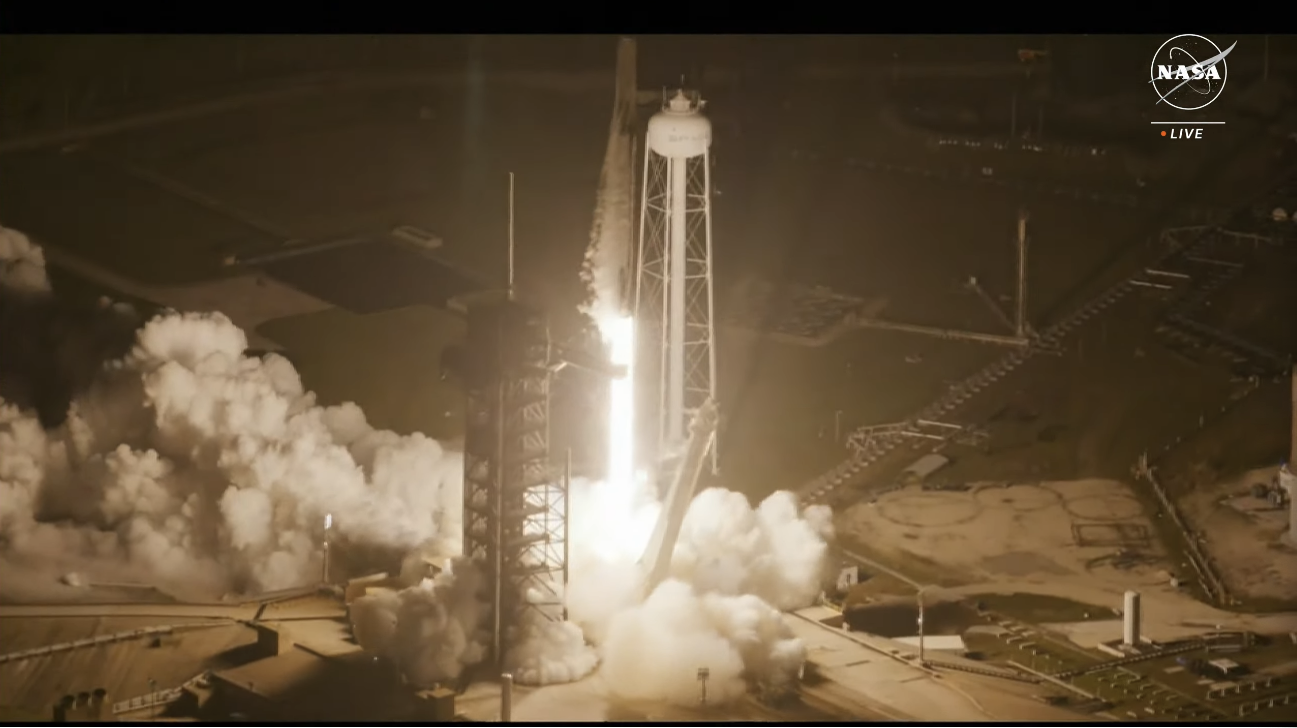
The second human space mission of 2024 is officially underway, following Sunday night’s rise of a brand-new Falcon 9 booster and a fleet-leading Crew Dragon spacecraft from historic Pad 39A at Florida’s Kennedy Space Center (KSC). Liftoff of the Dragon Endeavour spacecraft which made history in May-August 2020 when she flew Demo-2 astronauts Doug Hurley and Bob Behnken to the International Space Station (ISS), marking the first orbital flight of a U.S. citizens aboard a U.S. spacecraft, atop a U.S. rocket and from U.S. soil since the end of the Space Shuttle Program—took place at 10:53 p.m. EST, kicking off a 15-hour trek to the sprawling orbital complex.
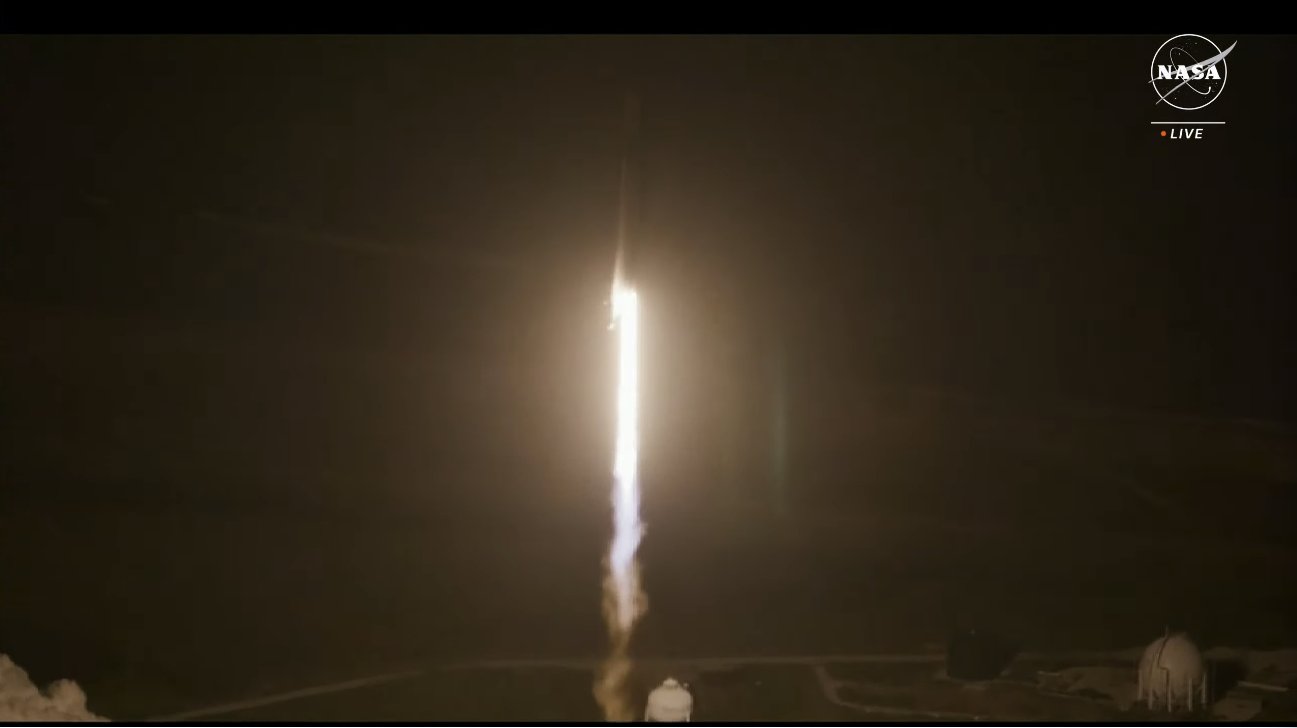
“Congratulations to NASA and SpaceX on another successful launch to the International Space Station,” said NASA Administrator Bill Nelson. “On this eighth crew-rotation mission, we are once again showing the strength of our commercial partnerships and American ingenuity that will propel us further into the cosmos.”
Aboard Dragon Endeavour for Crew-8 are NASA astronauts Matt Dominick, Mike Barratt and Jeanette Epps, together with Russian cosmonaut Aleksandr Grebenkin, who intend to live and work aboard the ISS until late August as part of Expeditions 70 and 71. During their six months in space, they will support around 250 research, technology and educational outreach investigations and welcome or bid farewell to ten or more visiting vehicles (both crewed and uncrewed), including the long-awaited Crew Flight Test (CFT) of Boeing’s CST-100 Starliner spacecraft, SpaceX Cargo Dragon and Northrop Grumman Corp. Cygnus cargo ships and perhaps the maiden voyage of Sierra Nevada Corp.’s Dream Chaser.
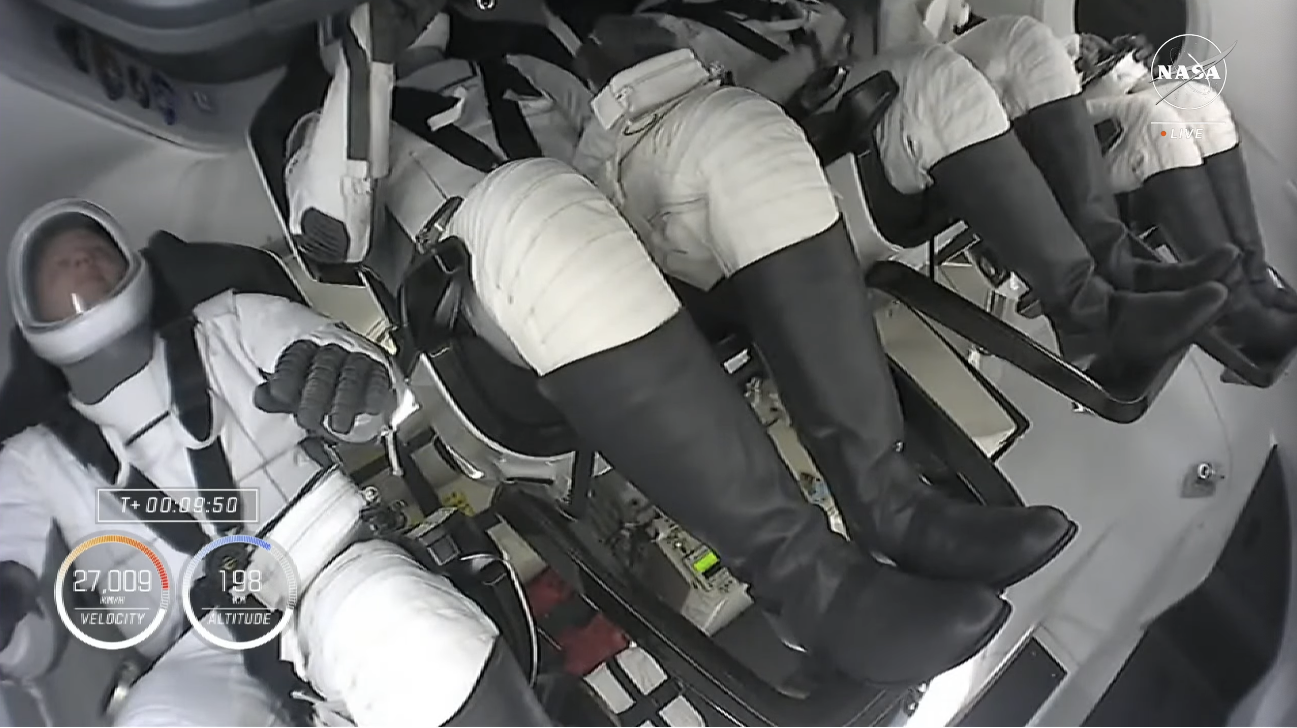
Dominick, Barratt, Epps and Grebenkin entered formalized pre-flight quarantine (properly termed “Flight Crew Health Stabilization”) on 20 February and flew via Gulfstream business jet from Ellington Field, near NASA’s Johnson Space Center (JSC) in Houston, Texas, to the Space Coast last Sunday. After disembarking at KSC’s Launch and Landing Facility (LLF), the quartet fielded media questions and shared menu selections for their final meals on Earth: Barratt opting for grilled salmon and vegetables, Dominick for “whatever Mike’s having, ’cause I trust his culinary choice”, Epps for butter chicken and saag and Grebenkin for a “nothing special” feast of soup, vegetables, meat and a side dish.
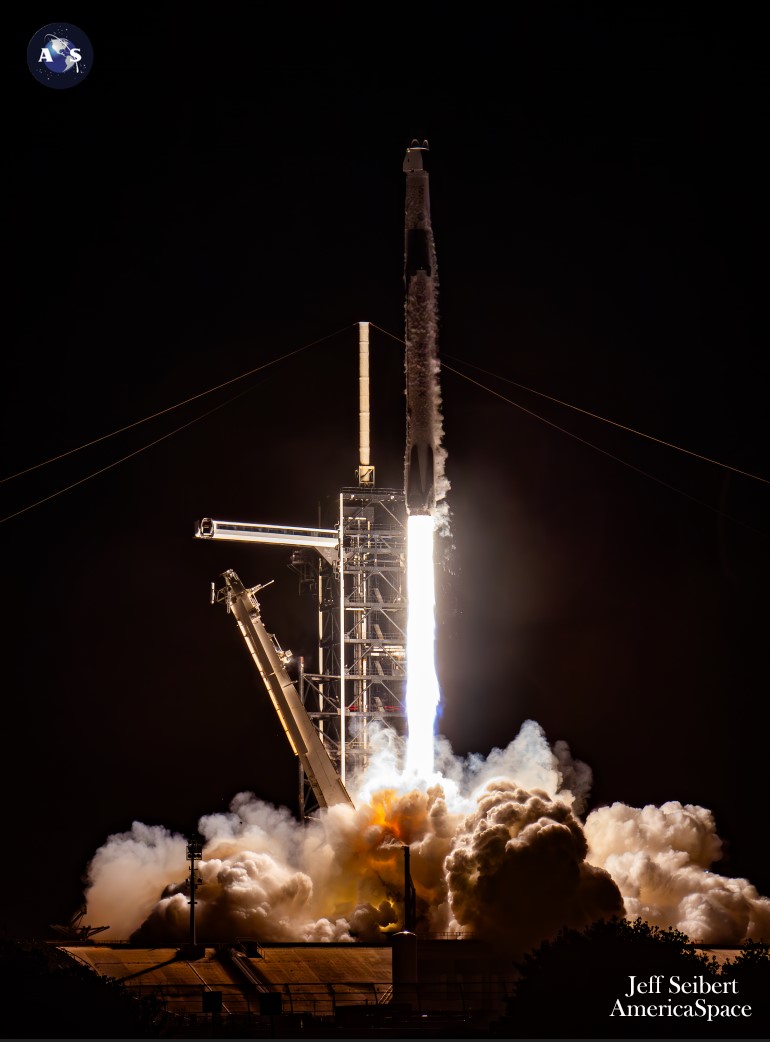
Commanding Crew-8, “rookie” astronaut Dominick likened himself to “a kid in a candy store” and Epps, the last U.S. member of her 2009 astronaut class to reach space joked “they always save the best for last”. Speaking through an interpreter, Grebenkin expressed his eagerness to get going and Barratt, the only spaceflight veteran on Crew-8, confidently expects to “discover something new” during his half-year off the planet.
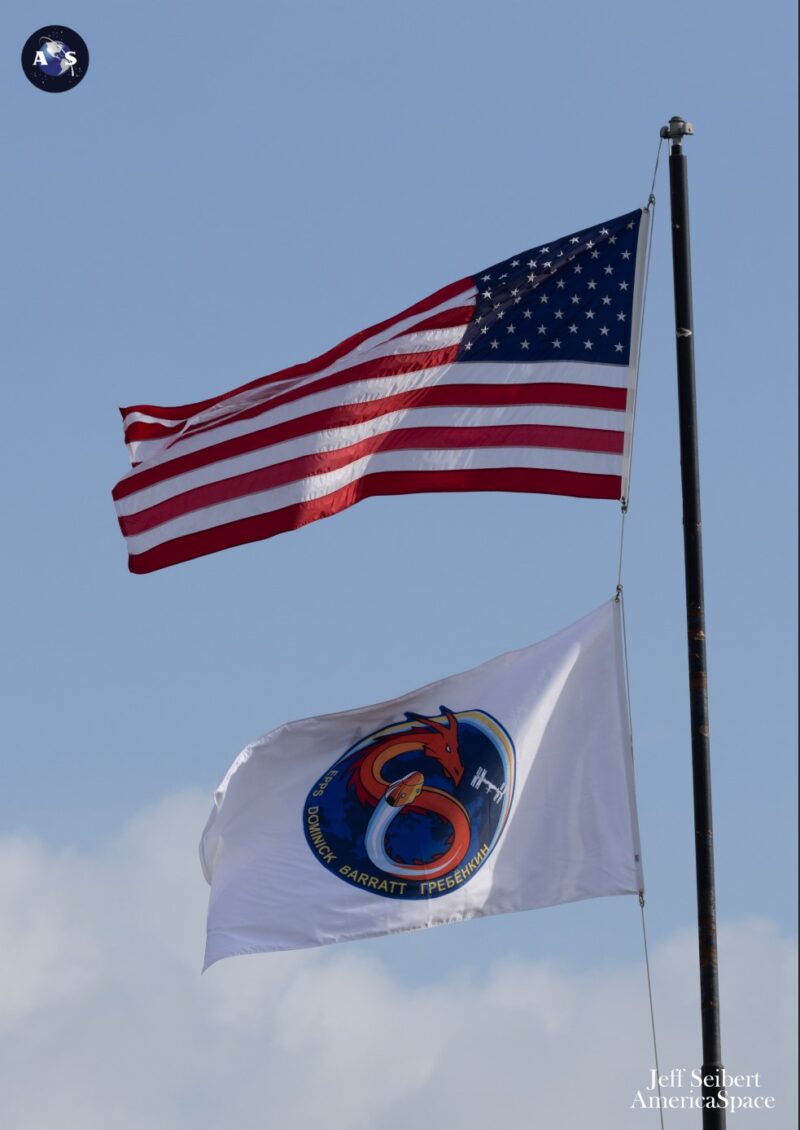
Following the satisfactory completion of the Flight Readiness Review (FRR) on Sunday, the 230-foot-tall (70-meter) Falcon 9 booster—comprising the brand-new B1083 core stage, a sparkling second stage and the four-times-used Dragon Endeavour perched at the top of the stack—was rolled out to Pad 39A and elevated to the vertical on Monday. Dominick, Barratt, Epps and Grebenkin participated in a fully suited “Dry Dress” rehearsal of their launch-day routines overnight Monday/Tuesday and B1083’s nine Merlin 1D+ engines were later put through a customary Static Fire Test, ramping up thrust for a few seconds to an estimated 1.5 million pounds (680,000 kilograms).
Teams initially tracked three back-to-back “instantaneous” launch opportunities for Crew-8: a pair of T-0 points spaced almost 24 hours apart at 12:04 a.m. EST and 11:41 p.m. EST Friday and a third at 11:16 p.m. EST Saturday. All three were bypassed by launch teams due to concerns about weather and wave conditions in the ascent corridor, guarding against the unlikely risk that Dragon Endeavour might be forced to perform an emergency return and splashdown in the minutes after liftoff.
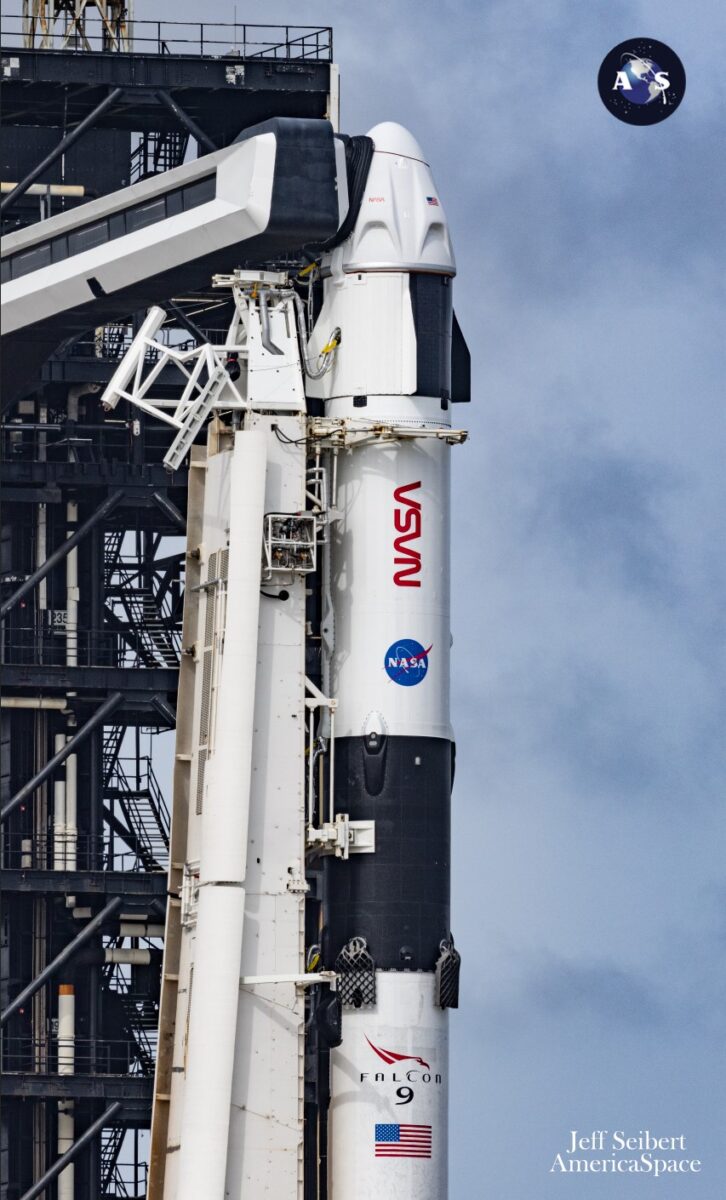
Crew-8 launched instead at 10:53 p.m. EST Sunday, putting Dragon Endeavour on course to rendezvous and autonomously dock at the forward port of the Harmony node about 3 a.m. EST Tuesday, 5 March. About two hours after docking, following pressurization and leak checks, the newcomers will be welcomed aboard by incumbent Expedition 70 Commander Andreas Mogensen of the European Space Agency (ESA), NASA’s Jasmin Moghbeli and Loral O’Hara, Russian cosmonauts Oleg Kononenko, Konstantin Borisov and Nikolai Chub and Japan Aerospace Exploration Agency (JAXA) astronaut Satoshi Furukawa, who have been aboard the station since last summer.
However, late Wednesday NASA and SpaceX announced their intent to forego both of Friday’s launch attempts and aim instead for the third opportunity at 11:16 p.m. EST Saturday, which was itself later called off. It was noted that all three opening launch tries had been scrubbed in response to poor predicted weather across Dragon Endeavour’s flight path in the event that a launch contingency should force an aborted landing in the Atlantic Ocean.
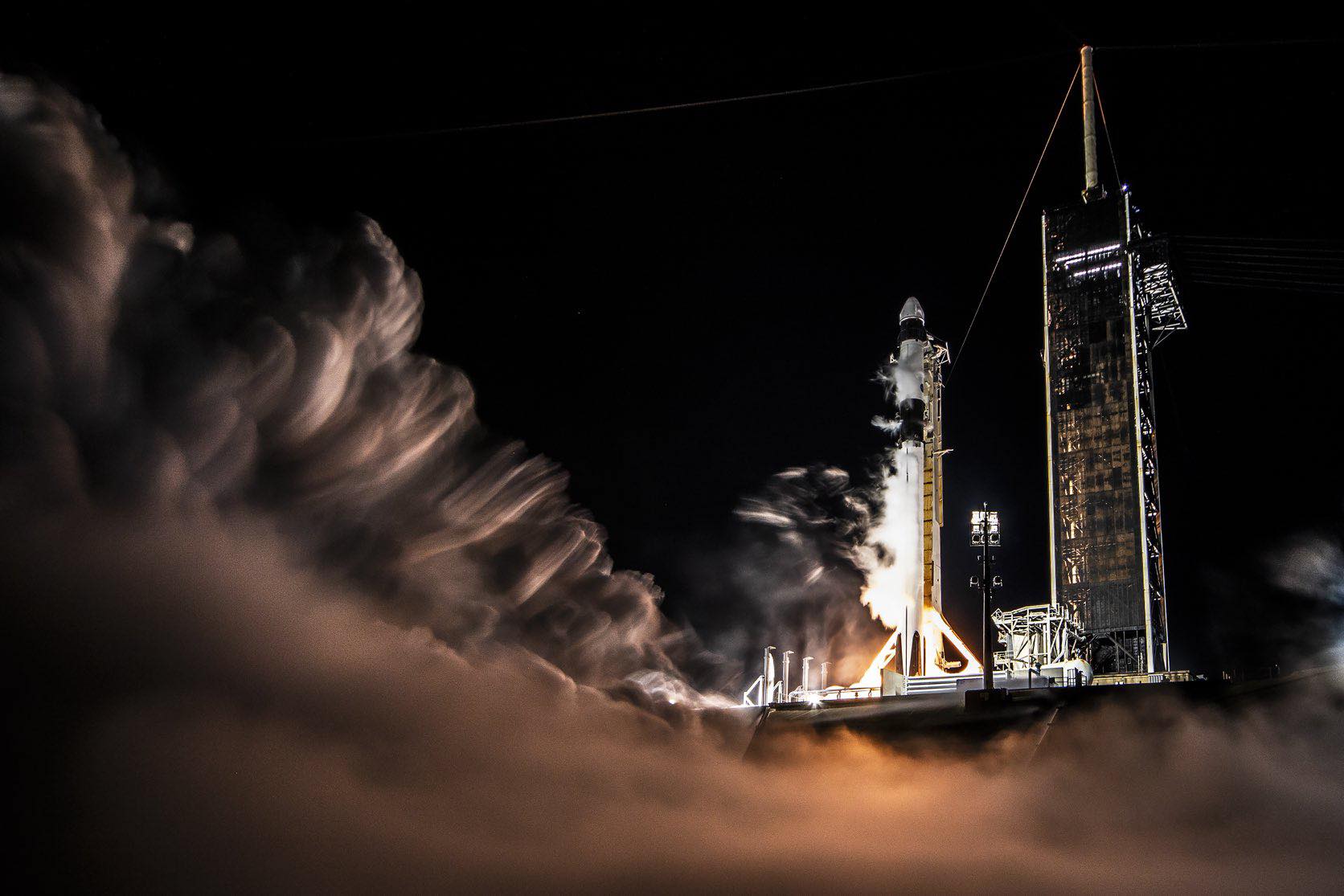
“High wind and waves along the eastern seaboard have been observed and are forecast to continue through Saturday morning,” NASA reported. “In the unlikely case of an abort during launch or the flight of Dragon, the wind and wave conditions must be within acceptable conditions for the safe recovery of the crew and spacecraft.”
Late Sunday evening, Dominick, Barratt, Epps and Grebenkin awakened, breakfasted, showered and donned their customized SpaceX launch and entry suits, then took the well-driven ride from the Neil Armstrong Operations & Checkout Building to the pad in a pair of Tesla Model Y cars. In the lead car were Dominick and Barratt, with Epps and Grebenkin following in the second.
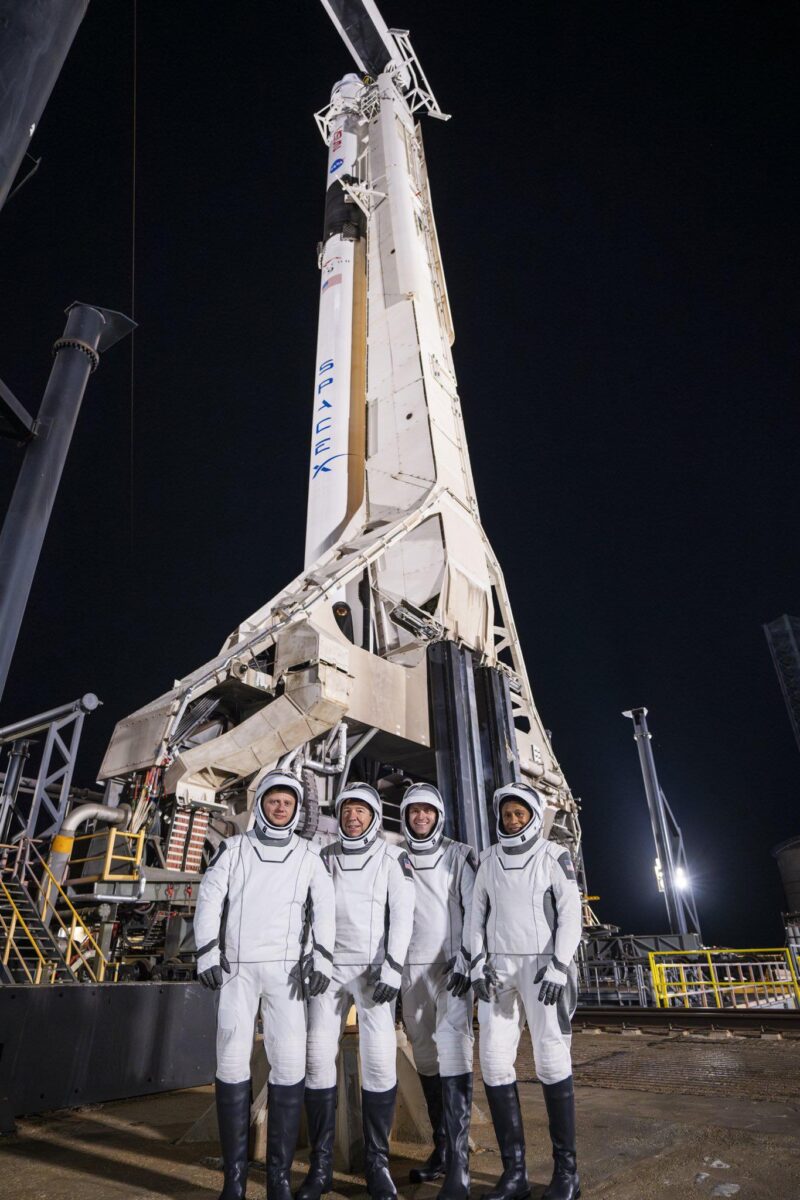
At historic Pad 39A—whose 169 prior launches between November 1967 and last month’s middle-of-the-night rise of Intuitive Machines’ IM-1 lunar mission included the first humans to orbit the Moon, the first crewed lunar landing, the Skylab space station and the first Space Shuttle flight—the quartet ascended the elevator and were aided in their seats aboard Dragon Endeavour. Two hours and 20 minutes before T-0, the hatch was closed and technicians began the process of departing the pad area.
The Crew Access Arm (CAA) was retracted at T-42 minutes and the Launch Escape System (LES) was placed onto internal power and armed at T-39 minutes, a critical milestone which enabled the loading of the Falcon 9 with liquid oxygen and a highly refined form of rocket-grade kerosene (known as “RP-1”) to commence.
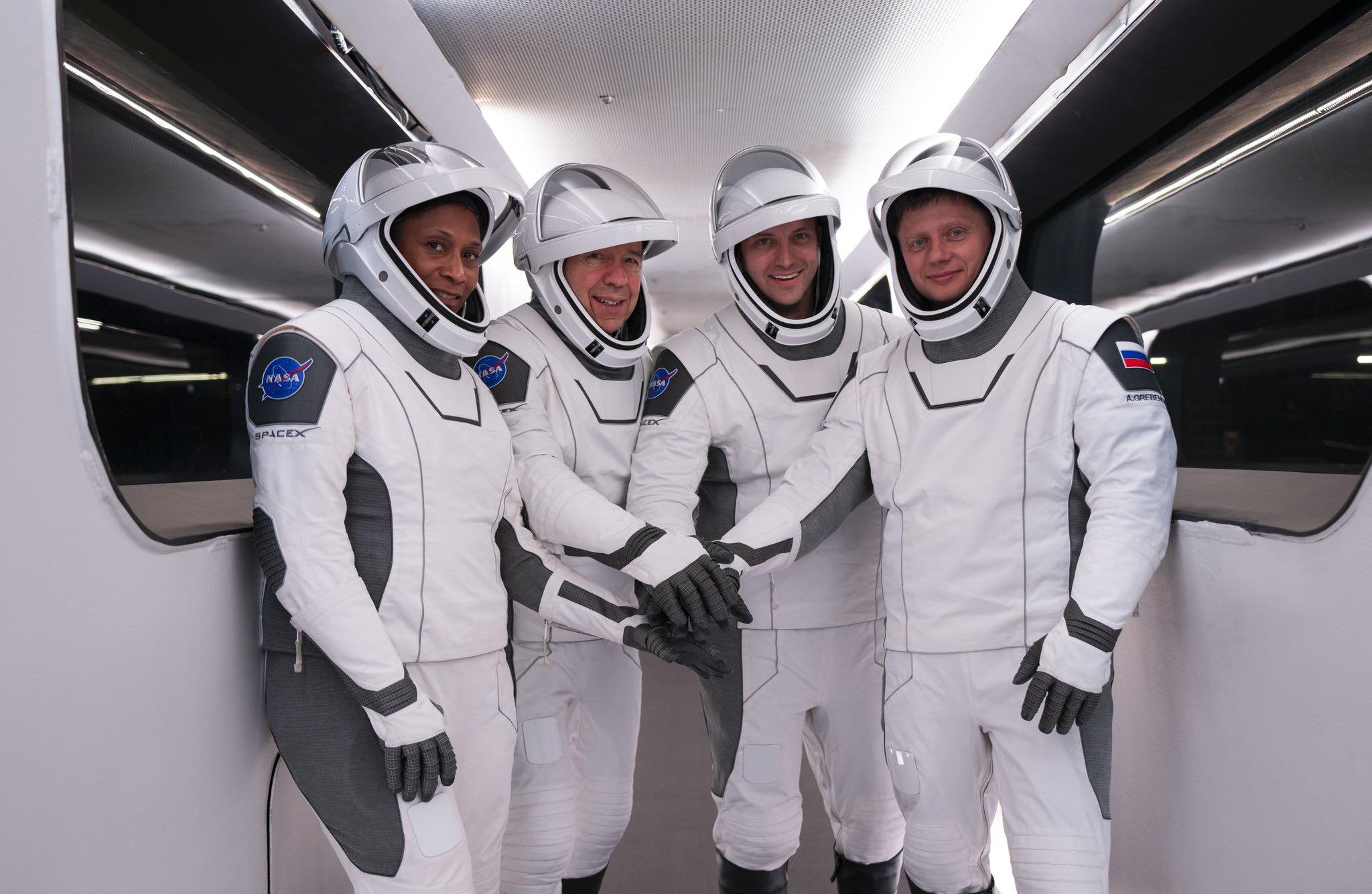
Heading past T-1 minute, the Falcon 9’s computers assumed primary command of the countdown and all vehicle critical parameters and the Launch Director issued a clipped “Dragon, SpaceX, go for launch” at T-45 seconds, a call crisply acknowledged by Commander Matt Dominick.
B1083 powered smoothly away from Pad 39A at 10:53 p.m. EST, her nine Merlin 1D+ engines delivering an estimated 1.5 million pounds (680,000 kilograms) of thrust to lift the stack airborne. Passing the point of peak aerodynamic turbulence upon the rocket, known colloquially as “Max Q”, about 58 seconds into ascent, the Merlins continued to burn hot and hard until Main Engine Cutoff (MECO) at 2.5 minutes after liftoff.
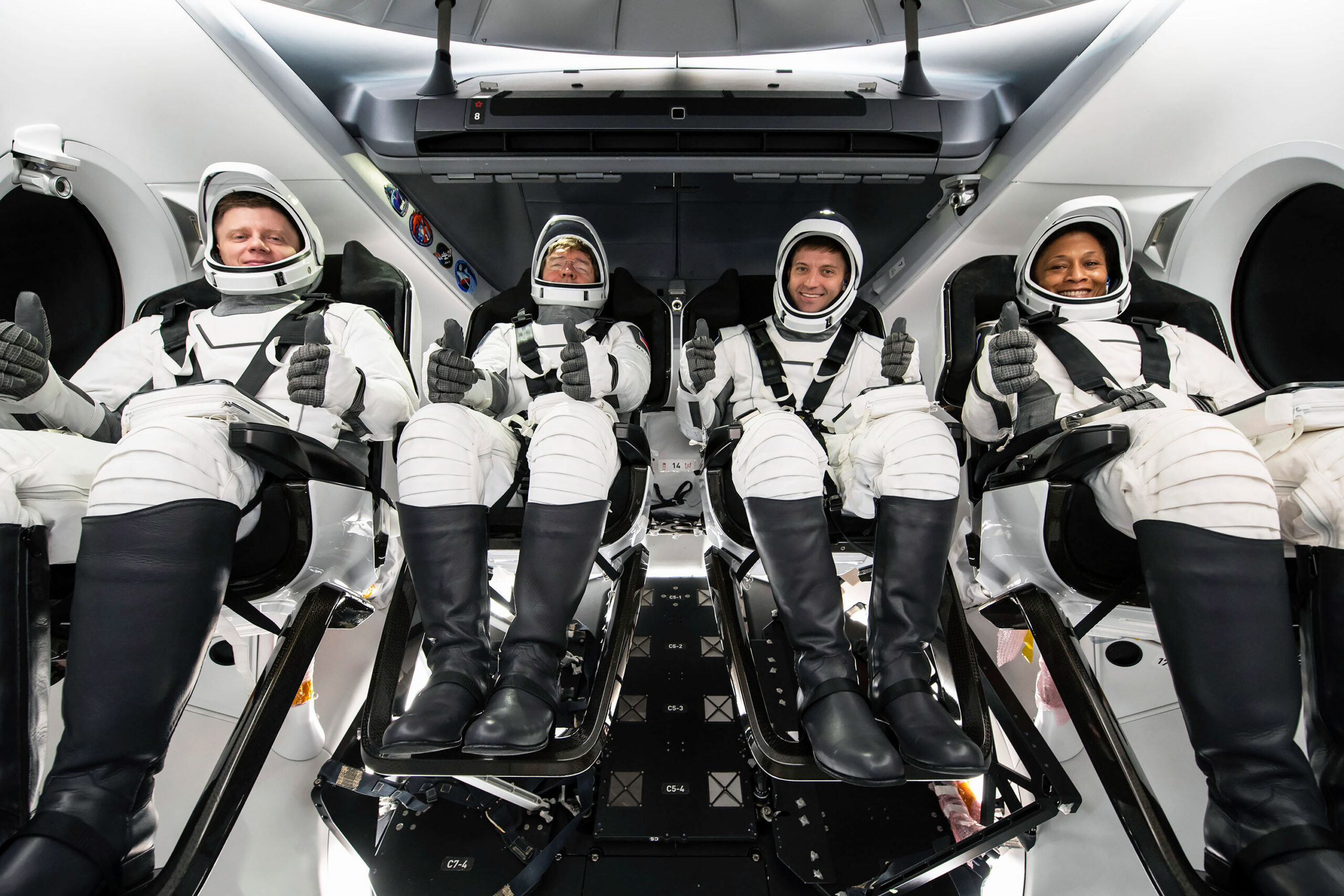
Her job done, B1083 separated from the stack and pirouetted to a smooth touchdown on solid ground at Landing Zone (LZ)-1 at Cape Canaveral, wrapping up the first mission of her career and becoming the second brand-new Falcon 9 core to enter service so far in 2024. The second stage’s single Merlin 1D+ Vacuum engine then ignited for six minutes to deliver Dragon Endeavour and her human cargo into low-Earth orbit, before shutting down crisply and on time at T+8.5 minutes.
Spacecraft and rocket parted company at 12 minutes into the flight and Dragon Endeavour’s nose cone opened 50 seconds later to expose the critical navigation and rendezvous sensors. The four astronauts will spend about 15 hours and ten Earth orbits in free flight, ahead of an autonomous docking at the forward-facing port of the space station’s Harmony node at about 3 a.m. EST Tuesday.
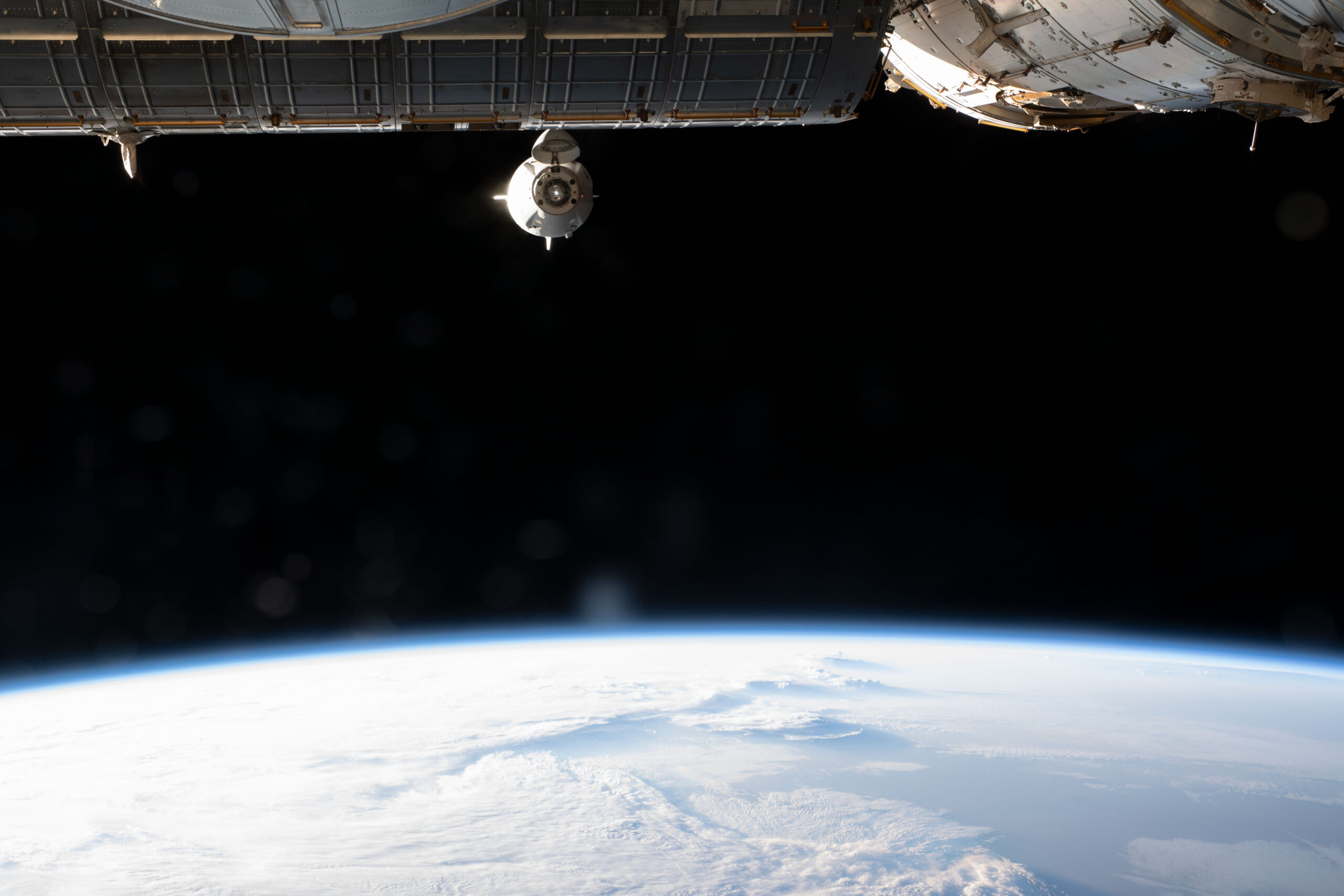
The new arrivals will spend between five and seven days of “direct handover” with Crew-7’s Moghbeli, Mogensen, Furukawa and Borisov, before the latter depart in their Dragon Endurance ship in the second week of March. They will return to a parachute-assisted splashdown off the Florida Coast, wrapping up an increment which has spanned Expeditions 69 and 70 and will end after about 195 days in orbit.




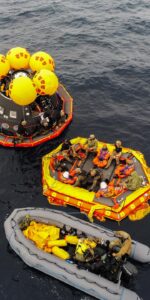
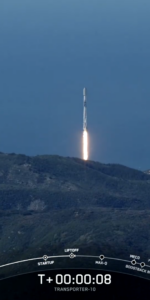
13 Comments
Leave a Reply13 Pings & Trackbacks
Pingback:SpaceX Launches Transporter-10, Aims for Next Launch Under Two Hours Later - SPACERFIT
Pingback:SpaceX Targets Back-to-Back Falcon 9 Missions, Next Starship Launch - AmericaSpace
Pingback:Crew-7 Prepares for Monday Space Station Departure, Tuesday Splashdown - AmericaSpace
Pingback:Crew-7 Prepares for Monday Space Station Departure, Tuesday Splashdown - SPACERFIT
Pingback:Crew-7 Returns Safely, Ends 6.5-Month Space Station Mission - AmericaSpace
Pingback:SpaceX Aims For Sixth, Seventh Launches of March, as Falcon 9, Starship Stand Ready - AmericaSpace
Pingback:SpaceX Aims For Sixth, Seventh Launches of March, as Falcon 9, Starship Stand Ready - SPACERFIT
Pingback:NASA’s Loral O’Hara to End 204-Day Mission, Return to Earth Tomorrow Night - AmericaSpace
Pingback:NASA’s Loral O’Hara to End 204-Day Mission, Return to Earth Tomorrow Night - SPACERFIT
Pingback:After Delta IV Heavy’s Swansong, Cape Roars to Accelerated Falcon 9 Launch Cadence - AmericaSpace
Pingback:After Delta IV Heavy’s Swansong, Cape Roars to Accelerated Falcon 9 Launch Cadence - SPACERFIT
Pingback:SpaceX Targets Tonight for Eighth Falcon 9 Launch of April - AmericaSpace
Pingback:SpaceX Targets Tonight for Eighth Falcon 9 Launch of April - SPACERFIT